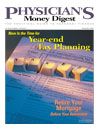Know the Bells and Whistles of a 401(k) Plan
When 401(k) plans were first conceived, they were intended to be a supplement to traditional plans, not a replacement. Ted Benna, a benefits consultant, designed a plan to allow some employees of a small bank to tax shelter a bonus if they so desired, while allowing other employees to take the bonus in cash. The rest is history. The idea took off, grabbing an increasing share of the total retirement plan landscape.
Solid Savings
As a supplemental plan, the 401(k) plan is a truly great idea. As such, they are often offered in combination with other pension plans. A 401(k) plan gives employees an opportunity to defer income by making voluntary pretax contributions to a retirement account up to certain limits. Employees are always fully vested in their own contributions, but are subject to vesting schedules on the employer's contributions if any. While contributions are pretax, or deferrals, they are subject to both Social Security and Medicare withholding.
Under various arcane nondiscrimination and top-heavy rules, if not enough of the lower paid employees participate, then the higher paid employees cannot contribute as much as they might like. To encourage sufficient participation, most plans offer an employer match. Employees who make contributions will have some or all of their contributions matched by the employer. These matching contributions range from exceedingly generous to something even Scrooge would have been ashamed of.
Investment Choices
Technically, the 401(k) is a profit-sharing plan with voluntary employee deferrals. Like other defined contribution plans, the majority of 401(k) plans are self-directed, in that the employee chooses from a limited menu of investment choices offered under the plan. Today, many firms offer only a 401(k) plan for retirement benefits. As a standalone plan, even with a generous match, it falls far short of a perfect retirement solution.
The standalone self-directed 401(k) plan is the last step in a long progression that shifts responsibility for retirement from the employer to the employee. The employee funds the plan from their wages through contribution of pay pretax dollars, bears the entire investment risk, and must determine how much to fund for retirement. The employee may pay the entire cost of administration and investment management from their account balances. Also, they must design their own asset allocation plan from the available choices within the plan.
If every employee was a disciplined, rational investment professional and if every plan offered the best possible investment choices, then the system might work well. Instead, most employers use bundled providers who sneak in high expenses, including commissions to the brokers and insurance agents who sell the plans.
is the founder and principal of Investor Solutions,
Inc, a fee-only, SEC-registered investment advisor. He is
also the author of The Informed Investor: A Hype-Free Guide to
Constructing a Sound Financial Portfolio (Amacom; 2002), which
is now available in paperback. For more information, visit
www.investorsolutions.com.
Frank Armstrong III
